 W
WChicano or Chicana is a chosen identity for Mexican Americans in the United States. The identity has also evolved into Xicano or Xicana and, more recently, Xicanx. Chicano/a is sometimes used interchangeably with Mexican American, although the terms have different meanings. While Mexican American identity emerged to encourage assimilation into white American society and separate the community from African American political struggle, Chicano/a identity emerged among anti-assimilationist youth, some of whom belonged to the Pachuco/a subculture, who reclaimed the term. Chicano/a was widely reclaimed in the 1960s and 1970s to express political empowerment, ethnic solidarity, and pride in being of Indigenous descent, diverging from the more assimilationist Mexican American identity. Chicano Movement leaders were influenced by and collaborated with Black Power leaders and activists. Chicano/a youth in barrios rejected cultural assimilation into whiteness and embraced their identity and worldview as a form of empowerment and resistance.
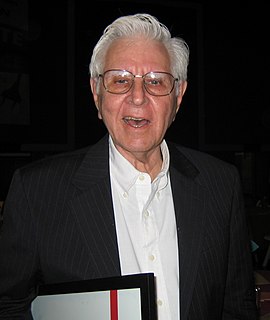 W
WRodolfo "Rudy" Francisco Acuña, Ph.D., is an American historian, professor emeritus at California State University, Northridge, and a scholar of Chicano studies. He authored the 1972 book Occupied America: A History of Chicanos, approaching history of the Southwestern United States with a heavy emphasis on Mexican Americans. An eighth edition was published in 2014. Acuña has also written for the Los Angeles Times, The Los Angeles Herald-Express, La Opinión, and numerous other newspapers. His work emphasizes the struggles of Mexican American people. Acuña is an activist and he has supported numerous causes of the Chicano Movement. He currently teaches an on-line history course at California State University, Northridge.
 W
WFrancisco Xavier Alarcón was a Chicano poet and educator. He was one of the few Chicano poets to have "gained recognition while writing mostly in Spanish" within the United States. His poems have been also translated into Irish and Swedish. He made many guest appearances at public schools so that he could help inspire and influence young people to write their own poetry especially because he felt that children are "natural poets."
 W
WAbel Alejandre is a Mexican-born, United States-based hyperrealist artist, best known for his explorations of masculinity and vulnerability. Working primarily in pencil, Alejandre creates intricately cross-hatched drawings that can take months to complete. Alejandre's series of twelve panels, "Panoramas," is featured at the Los Angeles Metro Rancho Park/Westwood station.
 W
WCarlos Almaraz was a Mexican-American artist and an early proponent of the Chicano street arts movement.
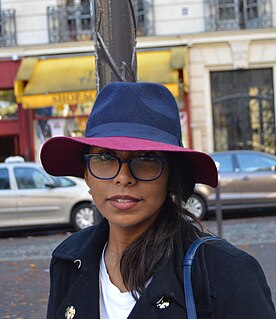 W
WNatalia Anciso is an American Chicana-Tejana contemporary artist and educator. Her artwork focuses primarily on issues involving Identity, especially as it pertains to her experiences growing up along the U.S.-Mexico Border, via visual art and installation art. Her more recent work covers topics related to education, human rights, and social justice, which is informed by her experience as an urban educator in the San Francisco Bay Area. She is a native of the Rio Grande Valley of South Texas and currently lives and works in Oakland, California.
 W
WBallet Folklorico en Aztlan (BFA) is a Chicano dance company focusing on Mexican folklore, and blending traditional dance with contemporary movements. The group was founded in 1967 by Hermina Enrique. Currently, her daughter, Viviana Enrique Acosta, is the Artistic Director. The members of BFA were instrumental in founding the Centro Cultural de la Raza which was the first home of the BFA.
 W
WBarrioization is a theory developed by Chicano scholars Albert Camarillo and Richard Griswold del Castillo to explain the historical formation and maintenance of ethnically segregated neighborhoods of Chicanos and Latinos in the United States. The term was first coined by Camarillo in his book Chicanos in a Changing Society (1979). The process was explained in the context of Los Angeles by Griswold del Castillo in The Los Angeles Barrio, 1850-1890: A Social History (1979). Camarillo defined the term as "the formation of residentially and segregated Chicano barrios or neighbourhoods." The term is used in the field of Human Geography.
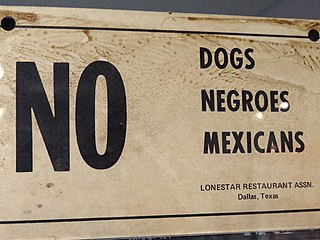 W
WBlack-Brown unity, variations include Black-Brown-Yellow unity and Black-Brown-Yellow-Red unity, is a racial-political ideology which initially developed among Black scholars, writers, and activists who pushed for global activist associations between Black people and Brown people, as well as Asian people and Indigenous peoples of the Americas to unify against white supremacy, colonialism, capitalism, and, in some cases, European conceptualizations of masculinity, which were recognized as interrelated in maintaining white racial privilege and power over people of color globally.
 W
WBlaxicans are people who are both Black and Mexican American. Some may prefer to identify as Afro-Chicano or Black Chicana/o and embrace Chicano identity, culture, and political consciousness. Most Blaxicans have origins in working class community interactions between Black Americans and Mexican Americans. Los Angeles has been cited as the hub for Blaxican culture. In 2010, it was recorded that 42,000 people in Los Angeles County identified as both Black and Latino, most of whom are believed to be both Black and Mexican American.
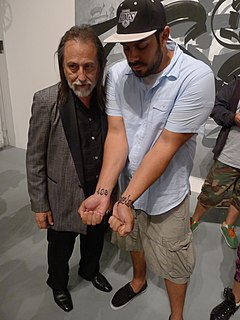 W
WCharles “Chaz” Bojórquez is a Chicano graffiti artist and painter who is known for his work in Cholo-style calligraphy. He is credited with bringing the Chicano and Cholo graffiti style into the established art scene. He began his art career by tagging in his neighborhood of Highland Park, Los Angeles in the early 1970s. In his youth, Bojórquez was given the tag Chaz, which meant "the one who messes things up and likes to fight."
 W
WCarlos Cañedo is an American rock musician, professional Argentine Tango dancer/choreographer, and documentary producer. As a musician, Cañedo performed in American punk rock and hardcore bands The PeeChees, Rice, and Beehive and the Barracudas, releasing albums on indie labels Kill Rock Stars, Lookout! Records, and Sub Pop. He is currently performing in Carlos Cañedo Is Filling Gaps with Adam Horovitz of the Beastie Boys. As a dancer, Cañedo has performed throughout the United States, Canada, Argentina, and Europe and his choreographies have been performed on Broadway and Europe. Carlos was also an associate producer of No No: A Dockumentary, a film about Dock Ellis, the baseball player turned drug abuse counselor who claims to have pitched a no-hitter on LSD. The documentary premiered at the 2014 Sundance Film Festival.
 W
WThe Centro Cultural de la Raza is a non-profit organization with the specific mission to create, preserve, promote and educate about Chicano, Mexicano, Native American and Latino art and culture. It is located in Balboa Park in San Diego, California.The cultural center supports and encourages the creative expression “of the indigenous cultures of the Americas.” It is currently a member of the American Alliance of Museums.
 W
WChicano Batman is a four-piece American band based in Los Angeles, California. Formed in 2008, the band is composed of Eduardo Arenas, Carlos Arévalo, Bardo Martinez and Gabriel Villa (drums). The group's sound draws from a mix of genres ranging from psychedelic soul, funk, indie, prog, and rock.
 W
WThe Chicano Movement, also referred to as El Movimiento, was a social and political movement inspired by prior acts of resistance among people of Mexican descent, especially of Pachucos in the 1940s and 1950s, and the Black Power movement, that worked to embrace a Chicano/a identity and worldview that combated structural racism, encouraged cultural revitalization, and achieved community empowerment by rejecting assimilation. Prior to the Movement, Chicano/a was a classist term of derision, reclaimed only by some Pachucos who adopted it as an expression of defiance to Anglo-American society. As a result of the Movement, Chicanismo arose and Chicano/a was widely reclaimed in the 1960s and 1970s to express political autonomy, ethnic and cultural solidarity, and pride in being of Indigenous descent, diverging from the assimilationist Mexican-American identity.
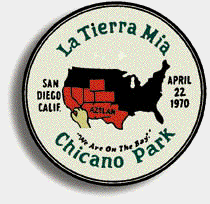 W
WChicano Park is a 32,000 square meter park located beneath the San Diego-Coronado Bridge in Barrio Logan, a predominantly Chicano or Mexican American and Mexican-migrant community in central San Diego, California. The park is home to the country's largest collection of outdoor murals, as well as various sculptures, earthworks, and an architectural piece dedicated to the cultural heritage of the community. Because of the magnitude and historical significance of the murals, the park was designated an official historic site by the San Diego Historical Site Board in 1980, and its murals were officially recognized as public art by the San Diego Public Advisory Board in 1987. The park was listed on the National Register of Historic Places in 2013 owing to its association with the Chicano Movement, and was designated a National Historic Landmark in 2016. Chicano Park, like Berkeley's People's Park, was the result of a militant people's land takeover. Every year on April 22, the community celebrates the anniversary of the park's takeover with a celebration called Chicano Park Day.
 W
WChicano rock is rock music performed by Mexican American (Chicano) groups or music with themes derived from Chicano culture. Chicano Rock, to a great extent, does not refer to any single style or approach. Some of these groups do not sing in Spanish at all, or use many specific Latin instruments or sounds. The subgenre is defined by the ethnicity of its performers, and as a result covers a wide range of approaches.
 W
WChicanos Por La Causa (CPLC) is a non-profit organization in Arizona founded in 1969. It is a statewide community development corporation (CDC). It has staff of nearly 900 and impacts more than 375,000 people every year throughout Arizona, Nevada, and New Mexico.
 W
WA cholo or chola is a member of a Chicano and Latino subculture or lifestyle associated with a particular set of dress, behavior, and worldview which originated in Los Angeles. A veterano or veterana is an older member of the same subculture. Cholo was first reclaimed by Chicano youth in the 1960s and emerged as a popular identification in the late 1970s. The subculture has historical roots in the Pachuco subculture, which is embraced by both Chicanos and Cholos. Cholo/a youth endure hyper-criminalization because they are stereotyped and equated with anti-social behavior, criminal behavior and gang activity, even though this is not a necessary precondition of being a cholo/a.
 W
WColegio Cesar Chavez was an American college-without-walls in Mount Angel, Oregon The college was named after Mexican American civil rights activist César Chávez. Colegio was established in 1973 and closed in 1983. Colegio was the first accredited, independent four-year Chicano/Latino college in the United States. In 1975 it was granted candidacy status from the Northwest Association of Schools and Colleges. In 1977, Colegio granted degrees to 22 graduates, a number exceeding the combined number of Chicanos who graduated that same year from University of Oregon and Oregon State University. In his book Colegio Cesar Chavez, 1973–1983: A Chicano Struggle for Educational Self-Determination, author Carlos Maldonado writes that Colegio Cesar Chavez was one of the few institutions that was named after Cesar Chavez during his lifetime.
 W
WThe Coyolxauhqui imperative is a theory named after the Aztec goddess of the moon Coyolxauhqui to explain an ongoing and lifelong process of healing from events which fragment, dismember, or deeply wound the self spiritually, emotionally, and psychologically. The imperative is the need to look at the wounds, understand how the self has been fragmented, and then reconstruct or remake the self in a new way. Repeatedly enacting this process is done in the search for wholeness or integration. The concept was developed by queer Chicana feminist Gloria E. Anzaldúa.
 W
WEmily Cranz is an American-born Mexican actress, singer, and dancer.
 W
WRamón Humberto Dovalina, Sr., is the retired fifth president of Laredo Community College, a two-year institution with the main campus on the grounds of historic Fort McIntosh on the Rio Grande in his native Laredo in Webb County in South Texas. With service from July 5, 1995, until August 31, 2007, Dovalina left the position with two years remaining in his contract. Under Dovalina, the physical appearance of the college was upgraded, the scholarship endowment fund increased from $100,000 in 1995 to more than $1 million in 2007, the institution advanced a 10-year master plan for new technology, and a $50 million South Campus was opened.
 W
WThe Eastside Café is an autonomous community organization founded in 2004 in the United States, located in El Sereno, Los Angeles, California. The collective is run by El Sereno residents and is inspired by the Zapatista movement, which sought the rights and autonomy of indigenous communities in Chiapas, Mexico in the early 1990s. Despite the name, the locale isn't a coffee shop, but rather an East Los Angeles cultural center.
 W
WEstrada Courts is a low-income housing project in the Boyle Heights area of Los Angeles, California. It is located between E. Olympic Blvd. on the south and E. 8th St. on the north, and S. Lorena St. on the east and S. Grande Vista Ave. on the west.
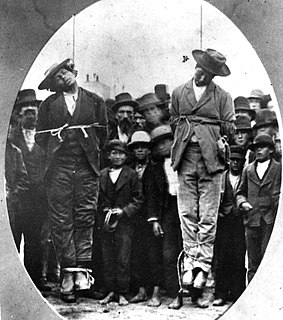 W
WGringo justice is a sociohistorical critical theory developed by Chicano sociologist, lawyer, and activist Alfredo Mirandé in 1987, who used it to provide an alternative explanation for Chicano criminality in the United States and challenge the racist assumption that Chicanos were inherently criminal, or biologically, psychologically, or culturally predisposed to engage in criminal behavior. The theory is applied by Chicano and Latino scholars to explain the double standard of justice in the criminal justice system between Anglo-Americans and Chicanos/Latinos. The theory also challenges stereotypes of Chicanos/Latinos as "bandidos," "gang-bangers," and "illegal alien drug smugglers," which have historically developed and are maintained to justify social control over Chicano/Latino people in the US.
 W
WJuan Leandro Maldonado was a higher education administrator who served as the sixth president of Laredo Community College in Laredo in Webb County in South Texas, USA. In August 2007, upon the sudden retirement of Ramón H. Dovalina, Maldonado assumed the LCC presidency. Maldonado retired from LCC effective August 1, 2016.
 W
WPachucos are male members of a counterculture associated with zoot suit fashion, jazz and swing music, a distinct dialect known as caló, and self-empowerment in rejecting assimilation into Anglo-American society that emerged in El Paso in the late 1930s. The pachuco counterculture flourished among Chicano boys and men in the 1940s as a symbol of rebellion, especially in Los Angeles. It spread to women who became known as pachucas and were perceived as unruly, masculine, and un-American. Some pachucos adopted strong attitudes of social defiance, engaging in la vida loca seen as deviant by white society, such as marijuana smoking, gang activity, and a turbulent night life. Although concentrated among a relatively small group of Mexican Americans, the pachuco counterculture became iconic among Chicanos and a predecessor for the cholo subculture which emerged among Chicano youth in the 1980s.
 W
WThe Punjabi Mexican American community, the majority of which is localized to Yuba City, California is a distinctive cultural phenomenon holding its roots in a migration pattern that occurred almost a century ago. The first meeting of these cultures occurred in the Imperial Valley in 1907, near the largest irrigation system in the Western hemisphere.
 W
WJacinto Quirarte was an art historian, professor, scholar and writer who was instrumental in documenting and promoting Latino and Chicano art in the United States. Quirarte was an "expert in pre-Columbian and Latin American art history." He was one of the first to insist that pre-Columbian art and Latino art become part of the mainstream American art history narrative. He wrote many papers, monographs and several books on the subject of both ancient and modern art in the United States, Mexico, Central and South America. He is one of the founding deans of the University of Texas at San Antonio (UTSA). Quirarte was also one of the first Mexican-American scholars to work at the university level.
 W
WThe Revolt of the Cockroach People is a novel by Oscar Zeta Acosta. It tells the story of a Chicano lawyer, "Buffalo Zeta Brown," fictionalizing events from Oscar Acosta's own life, including the East L.A. walkouts at Garfield High School, the founding of the Brown Berets, the Christmas protests at St. Basil's church, the Castro v. Superior Court decision of 1970, Acosta's run for sheriff of Los Angeles County later that year, the Chicano National Moratorium, and the death of Ruben Salazar, who is referred to as "Roland Zanzibar" in the novel. Acosta uses the historical events of the late 1960s and early 1970s "as the context for the construction of a Chicano identity and the realization of a revolutionary class consciousness."
 W
WAndy Russell was an American popular vocalist, actor, and entertainer of Mexican descent, specializing in traditional pop and Latin music. He sold 8 million records in the 1940s singing in a romantic, baritone voice and in his trademark bilingual English and Spanish style. He had chart-busters, such as "Bésame Mucho", "Amor", and "What a Diff'rence a Day Made". He made personal appearances and performed on radio programs, most notably Your Hit Parade, in several movies, and on television. During this initial phase of his career, his popularity in the United States rivaled that of crooners Frank Sinatra and Perry Como.
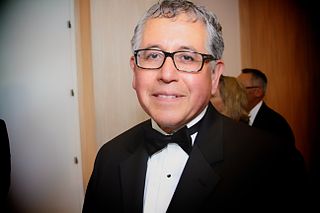 W
WJesús Salvador Treviño is an American television director of Mexican descent.
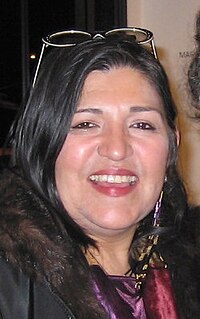 W
WLinda Vallejo is an American artist known for painting, sculpture and ceramics. Her work often addresses her Mexican-American ethnic identity within the context of American art and popular culture. The founder of the commercial art gallery Galería Las Américas, she is also an arts educator and has been involved in traditional Native American and Mexican rituals and ceremonies for many years.